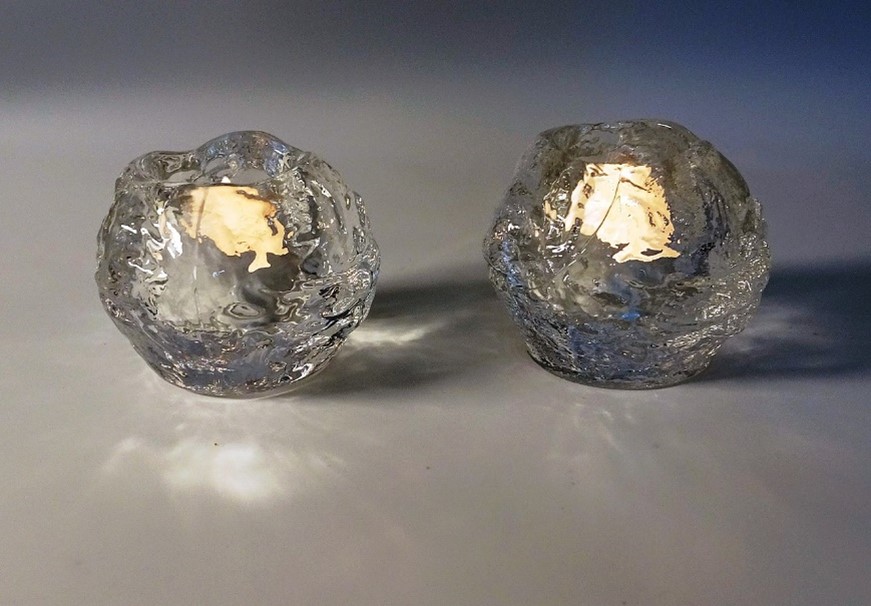2024-01-12:
For us who grew up in Sweden during the 1970ies, we all recognize the candle holder “Snowball” which was displayed in almost every home. One bought these to give away to foreign relatives or business acquaintances and were often met with a surprised look about how to use this glass lump. “Snowball” is designed in 1973 by Ann Wolff, one of Sweden´s most well-known glass artists, for many years active at the glassmaker Kosta Boda.

Photo: Holger Ellgaard, Source: Wikipedia
According to an article in The Guardian, the shape of the candle holder came after a period when Ann Wolff tried to blow glass into snowdrifts to see how the material reacted. She says that the design is a mixture of cold and warm and even though she thought that it would sell, she could never have imagined the massive sales success it has become. The candle holder started to sell in 1973 and is still in the assortment of Kosta Boda and has today been sold in more than 15 million copies. However, Ann Wolff claims in an application for summons to the Patent and Market Court in December 2023, that she has not been fully compensated for the sales of “Snowball” and refers to the EU rule on retrospective compensation, a “Bestseller clause” introduced to strengthen i.a. designer´s rights towards manufacturers, Article 18-22 of the Directive (EU) 2019/790 (DSM Directive); implemented in 29 § Act (1960:729) on Copyright in Literary and Artistic Works, where it is stated:
If the agreed remuneration for a transfer according to the first paragraph turns out to be disproportionately low compared to all the subsequent relevant revenues derived from the exploitation of the works, the authors is entitled to claim additional and fair remuneration.
Ann Wolff received a remuneration of 2 % royalty for each sold copy of “Snowball” candle holder. This payment was however terminated in 1984 when Kosta Boda notified Wolff that as 10 years had passed since the creation of the candle holder, a design which is regarded as a work of applied art, the copyright protection had expired.
Ann Wolff is claiming, via her representative, that the termination of the agreement with Kosta Boda is void as already in 1972 there was no 10-year limit for copyright for works of applied art, instead it was the same term of protection as other copyright works, namely 70 years after the death of the author. Moreover, it is claimed that Wolff should correctly have received between 10 to 15 million SEK in compensation, if she would have retained remuneration in the form of royalty on all products sold. Ann Wolff states in a radio interview with SR Gotland that she did in fact tried in vain already in 2001 to get Kosta Boda to pay more royalty.
Kosta Boda refers to the implementing articles to the new rule in the Act on Copyright, which states that the new rule is indeed applicable also for agreement concluded before the date of entering into force of January 1st 2023, but not further back than to January 1st 2003, thus after the agreement that Wolff and Kosta Boda had.
In the article in The Guardian, it is noted that the parties tried to reach a settlement, where Wolff was offered 400 000 SEK in lump sum plus 4% royalty on future sales. In return, Wolff should agree to the candle holder being manufactured in the colours red, yellow and blue. Wolff rejected this proposal, both as to the amount of the remuneration and that the candle holder should be made in colours. Wolff’s suggestion how Kosta Boda should pay the outstanding compensation according to her, is to set up a prize or fund for young, female glass artists, which prize also could mark the 50 years anniversary of the iconic design.
If Wolff should be successful with her claims, it may in the future lead to further court cases regarding requirement of remuneration for unexpected sales successes.
Text: Astrid Johnsson
